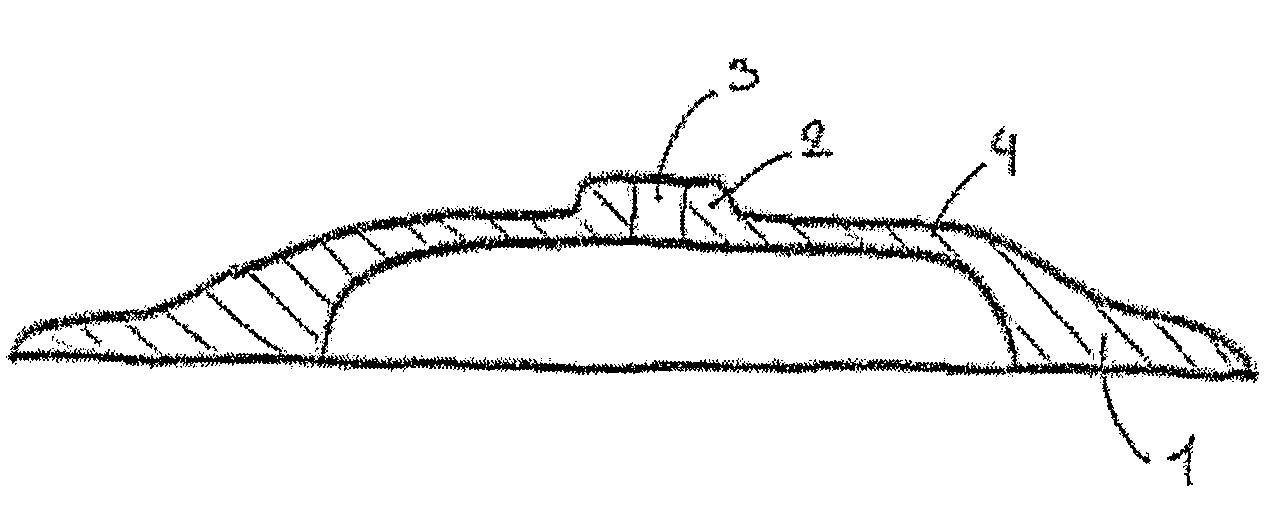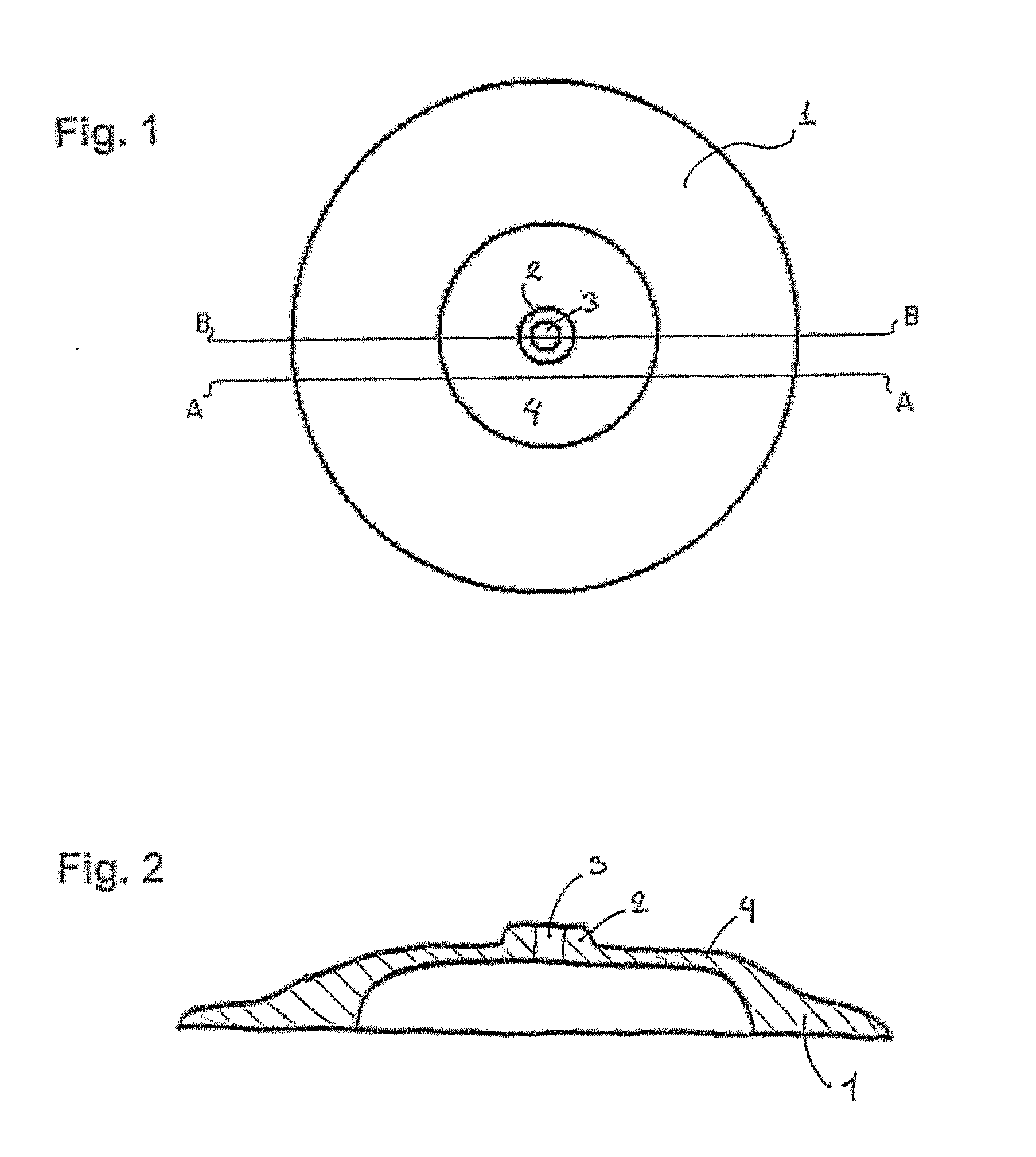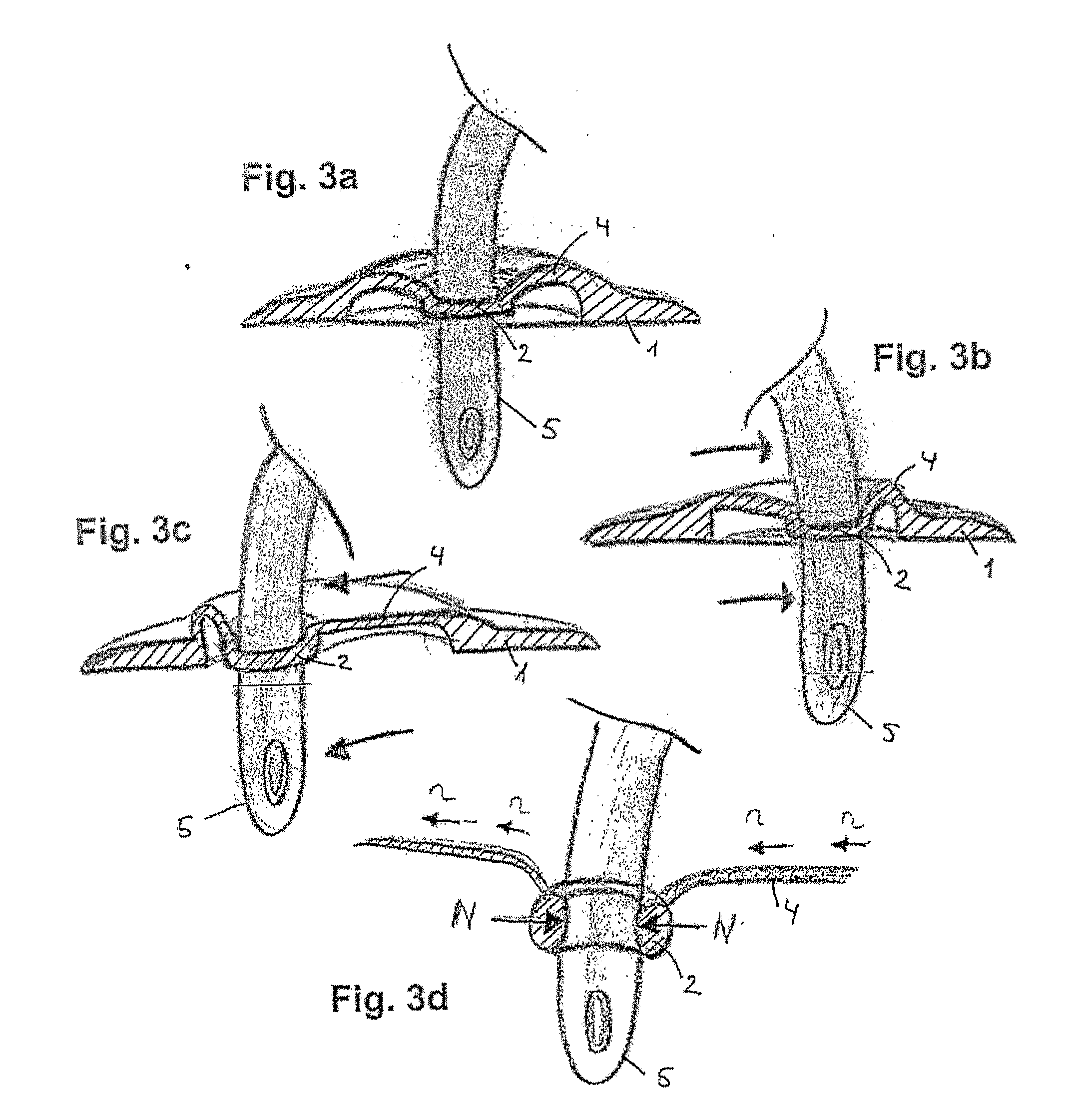Access Port
a technology of access port and stent, which is applied in the direction of catheter, infusion needle, trocar, etc., can solve the problems of kinking of the conduit, poor sealing around the catheter, and inability to achieve a good seal around the catheter, so as to reduce the risk of kinking the conduit and facilitate the opening
- Summary
- Abstract
- Description
- Claims
- Application Information
AI Technical Summary
Benefits of technology
Problems solved by technology
Method used
Image
Examples
examples
[0098]The position and dimensions of the sleeve portion is important in order to obtain an optimum sealing against a conduit. Different samples have been tested in order to identify the critical properties.
[0099]The material for the access port has been stored at 23° C. or 40° C. for 15 month at 100% humidity and tested afterwards up to a pressure on 0.03 bar.
[0100]The samples have been tested for providing perfect sealing under conditions similar to use on a fistula / wound collection pouch, for 3 days at 100% humidity at 40° C. It is important to test the samples under such conditions, as these reflect the condition the access port may be used under. Catheters or conduits may stay inserted for days, and a port that may be leakage proof the first day, may be influenced by the temperature, stress and humidity and thus become less leakage proof over time.
[0101]The tests showed that most materials would change their properties over time and temperature. An aperture designed for easy acc...
example a
Importance of the Positioning of the Sleeve
[0103]An access port with a simple design as illustrated in FIGS. 7a and 7b was prepared from SEBS. All dependent on the size of the starting aperture in the access port and the size of the inserted catheter the test result may vary slightly. Test has shown that most very flexible materials will show same result even if a much bigger catheter is inserted through same small starting aperture.
[0104]In this example the wall thickness of the sleeve is 0.6 mm and the sleeve length is 8 mm and having a starting aperture of 5 mm. Stored for 3 days at 100% humidity at 40° C. with a CH18 (6 mm) catheter inserted in the access port.
TABLE 1SleeveTest atTest atTest atposition0.050.15 bar0.3 barUpwardsRisk of leakageLeakageLeakageDownwardsNo leakNo leakNo leakageor minimalrisk of leakage
[0105]Results with the sleeve portion positioned downwards—a significant improvement of the sealing, same result can be achieved even when rotating the catheter as long ...
example b
Attempt to Compensate for the Change in Material Properties—with Designs where the Sleeve is Positioned Upwards
[0107]In FIGS. 8a and 8b is shown solutions based on use of fixation means, which can fixate the access port to the catheter, preventing the catheter in moving upwards and maintaining perfect sealing by obtaining a constant pressure between the catheter walls and the sleeve of the access port.
[0108]The solution involves either a repositionable string, cord, clamp, tape or other fixations means (12). It is preferred that the fixation means can be tightened all around the catheter.
PUM
 Login to View More
Login to View More Abstract
Description
Claims
Application Information
 Login to View More
Login to View More - R&D
- Intellectual Property
- Life Sciences
- Materials
- Tech Scout
- Unparalleled Data Quality
- Higher Quality Content
- 60% Fewer Hallucinations
Browse by: Latest US Patents, China's latest patents, Technical Efficacy Thesaurus, Application Domain, Technology Topic, Popular Technical Reports.
© 2025 PatSnap. All rights reserved.Legal|Privacy policy|Modern Slavery Act Transparency Statement|Sitemap|About US| Contact US: help@patsnap.com



